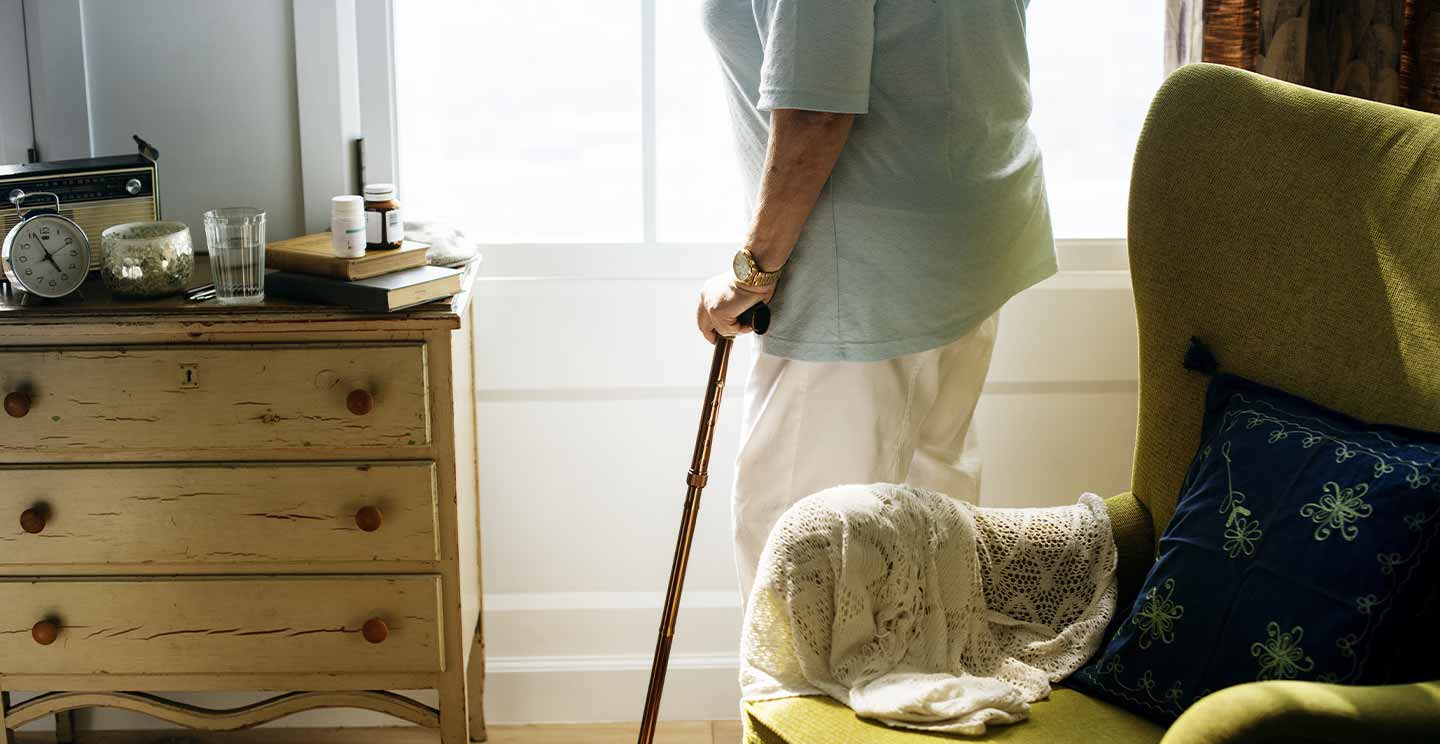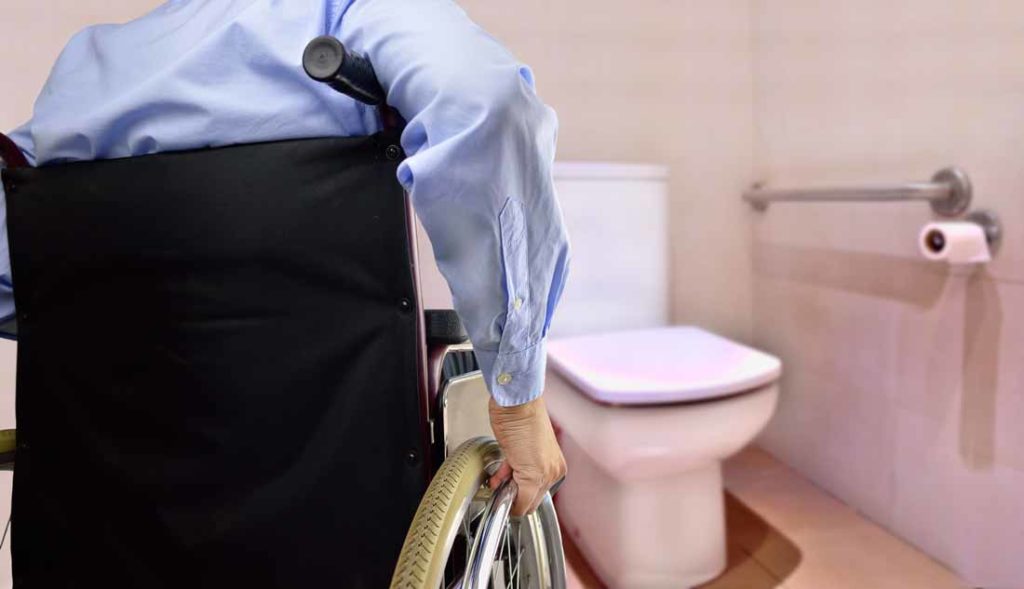Firstly, go through each room of the house looking for potential issues. It’s challenging to look at the same rooms you see every day and see them differently, but that’s exactly what you need to do. If you have a carer, you could ask for their help with this.
Key things to consider:
- Items you’ll need to access that are out of reach
- Anything likely to fall at an inopportune moment
- Anything you’re likely to bump into in the dark
- Get rid of rugs. The edges can be a tripping hazard, and any time the rug bunches up they become a serious hazard.
- Anything you might trip over or must step over.
- It is important to have a clear path to move around your house. That will probably mean having to re-arrange the furniture in your home to move more items against the wall, out of the way or get rid of them entirely.
Add more lighting.
The better you can see what’s around you, the more you reduce the risk of running into things or tripping over something. Add lighting low on the wall anywhere in the home where there’s a step or something you could risk tripping over or running into.
Re-organize your cupboards/drawers for better accessibility.
Anytime you try to get on a chair or stepladder to reach something, you’re putting yourself at unnecessary risk. Tackle all the cabinets in your kitchen, bathroom, and anywhere else in your house to move anything currently out of reach somewhere lower. Close cupboards doors to avoid
Dangers of the bathroom.
Buy a safety seat or transfer bench for the bath. This may straddle the bath and will allow an elderly guest to sit on one side and slide over to the other. Bath chairs are also available for people who are unsteady on their feet. Buy a lightweight seat that’s easy to move.
If your bathroom doesn’t have grab bars, you can buy an easy-to-install adjustable bar that clamps to the edge of the bath. It’s never a good idea to grab hold of a towel rail or a soap dish as they are not designed to hold a person’s weight.
Non-slip bathmats are really important. It’s a good idea to avoid oily bath products and let the soap suds go down before moving out of the shower. Replace taps with ones that are easy to turn on and off. Install inexpensive anti-scalding devices or adjust the thermostat on your water heater. If there is a lock on the bathroom door, you may want to remove this so that others can get into the bathroom easily if you fall.
Bedrooms.
Use plug-in night lights in each bedroom, in hallways and in bathrooms to provide a clear path for late-night bathroom visits. Put a night light in the kitchen too.
Position lamps near your bed. Leave torches with fresh batteries on bedside tables to provide extra light.
Living room.
Arrange furniture to create clear, easy-to-navigate paths throughout rooms. Put items that are low to the ground, such as magazine racks and coffee tables, out of the line of traffic to help prevent falls or bumping injuries.
Become a minimalist – Remove clutter, electrical cords, pet toys.
Clutter for those with dementia is very confusing and hard to process. Becoming a minimalist and removing mirrors and busy wallpaper makes life easier. Use double-sided tape or non-stick carpet mesh to keep rugs in place. Loose rugs and runners are a major cause of falls and should be removed ideally. Replace door handles with ones that are easy to use. Move small and low furniture
Stairways.
If the carpet on the stairs has become threadbare, consider installing non-slip rubber stair treads for better footing.
Pets.
Pets, especially pets which are getting on themselves, can present a hazard as people can trip over them. Move beds to where they won’t be tripped over and make sure pets are contained at night.
What extra help can I get?
In the last few years, there has been significant innovation in technology to support older and vulnerable people to live independently at home. (See our article ‘How Technology can help you to live at home independently’). You may also find it valuable to consult an Occupational Therapist (OT) or a Home Improvement agency (also known as Care & Repair or Staying Put scheme). OTs are experienced professionals who can support you in finding the most appropriate equipment and can advise you on how you might best adapt your home to be able to carry out everyday activities. Waiting lists for referrals can be long but your GP or District nurse should be able to advise.


